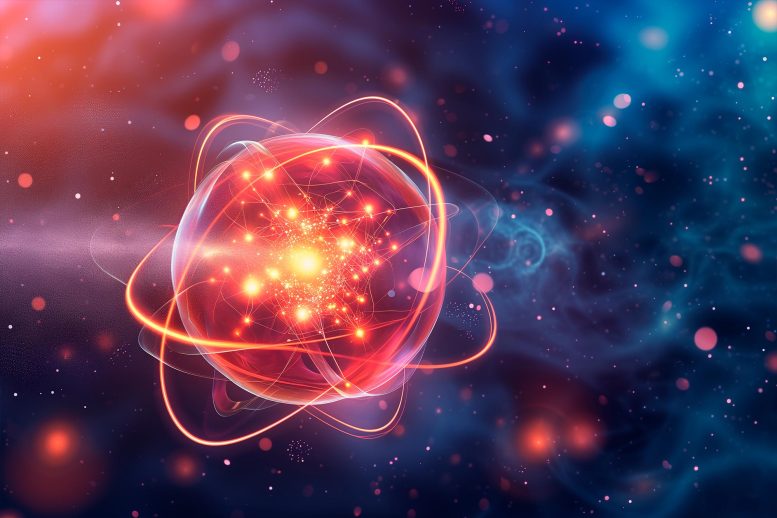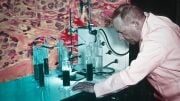
New research identifies vanadium as a promising element for carbon capture, thanks to its balanced reactivity and the ability of vanadium peroxide molecules to bind carbon dioxide efficiently. This work contributes to the global effort to develop direct air capture technologies, offering a new avenue for reducing atmospheric carbon dioxide and mitigating climate change.
A chemical element so visually striking that it was named for a goddess shows a “Goldilocks” level of reactivity – neither too much nor too little – that makes it a strong candidate as a carbon scrubbing tool.
The element is vanadium, and research by Oregon State University scientists has demonstrated the ability of vanadium peroxide molecules to react with and bind carbon dioxide – an important step toward improved technologies for removing carbon dioxide from the atmosphere.
Federal Efforts and Direct Air Capture Developments
The study is part of a $24 million federal effort to develop new methods for direct air capture, or DAC, of carbon dioxide, a greenhouse gas that’s produced by the burning of fossil fuels and is associated with climate change.
Facilities that filter carbon from the air have begun to spring up around the globe but they’re still in their infancy. Technologies for mitigating carbon dioxide at the point of entry into the atmosphere, such as at power plants, are more well-developed. Both types of carbon capture will likely be needed if the Earth is to avoid the worst outcomes of climate change, scientists say.
Oregon State’s Role and the Significance of Transition Metals
In 2021 Oregon State’s May Nyman, the Terence Bradshaw Chemistry Professor in the College of Science, was chosen as the leader of one of nine direct air capture projects funded by the Department of Energy. Her team is exploring how some transition metal complexes can react with air to remove carbon dioxide and convert it to a metal carbonate, similar to what is found in many naturally occurring minerals.
Transition metals are located near the center of the periodic table and their name arises from the transition of electrons from low energy to high energy states and back again, giving rise to distinctive colors. For this study, the scientists landed on vanadium, named after Vanadis, the old Norse name for the Scandinavian goddess of love said to be so beautiful her tears turned to gold.
The Chemical Process and Challenges in Direct Air Capture
Nyman explains that carbon dioxide exists in the atmosphere at a density of 400 parts per million. That means for every 1 million air molecules, 400 of them are carbon dioxide, or 0.04%.
“A challenge with direct air capture is finding molecules or materials that are selective enough, or other reactions with more abundant air molecules, such as reactions with water, will outcompete the reaction with CO2,” Nyman said. “Our team synthesized a series of molecules that contain three parts that are important in removing carbon dioxide from the atmosphere, and they work together.”
One part was vanadium, so named because of the range of beautiful colors it can exhibit, and another part was peroxide, which bonded to the vanadium. Because a vanadium peroxide molecule is negatively charged, it needed alkali cations for charge balance, Nyman said, and the researchers used potassium, rubidium, and cesium alkali cations for this study.
She added that the collaborators also tried substituting other metals from the same neighborhood on the periodic table for vanadium.
“Tungsten, niobium, and tantalum were not as effective in this chemical form,” Nyman said. “On the other hand, molybdenum was so reactive it exploded sometimes.”
In addition, the scientists substituted ammonium and tetramethyl ammonium, the former of which is mildly acidic, for the alkalis. Those compounds didn’t react at all, a puzzler the researchers are still trying to understand.
Vanadium Peroxide’s Unique Properties and Research Contributions
“And when we removed the peroxide, again, not so much reactivity,” Nyman said. “In this sense, vanadium peroxide is a beautiful, purple Goldilocks that becomes golden when exposed to air and binds a carbon dioxide molecule.”
She notes that another valuable characteristic of vanadium is that it allows for the comparatively low release temperature of about 200 degrees Celsius for the captured carbon dioxide.
“That’s compared to almost 700 degrees Celsius when it is bonded to potassium, lithium or sodium, other metals used for carbon capture,” she said. “Being able to rerelease the captured CO2 enables reuse of the carbon capture materials, and the lower the temperature required for doing that, the less energy that’s needed and the smaller the cost. There are some very clever ideas about the reuse of captured carbon already being implemented – for example, piping the captured CO2 into a greenhouse to grow plants.”
Other Oregon State authors on the paper included Tim Zuehlsdorff, assistant professor of theoretical/physical chemistry, and postdoctoral researcher Eduard Garrido.
“I’m also really proud of the hard work of the graduate students in my lab, Zhiwei Mao and Karlie Bach, and undergraduate Taylor Linsday,” Nyman said. “This is a brand new area for my lab, as well as for Tim Zuehlsdorff, who supervised Ph.D. student Jacob Hirschi on the computational studies to explain the reaction mechanisms. Starting a new area of study involves many unknowns.”
Reference: “Implementing vanadium peroxides as direct air carbon capture materials” by Eduard Garrido Ribó, Zhiwei Mao, Jacob S. Hirschi, Taylor Linsday, Karlie Bach, Eric D. Walter, Casey R. Simons, Tim J. Zuehlsdorffa and May Nyman, 21 December 2023, Chemical Science.
DOI: 10.1039/D3SC05381D
The study was funded by the US Department of Energy.









Be the first to comment on "“Goldilocks” Element – Scientists Make Key Advance for Capturing Carbon From the Air"